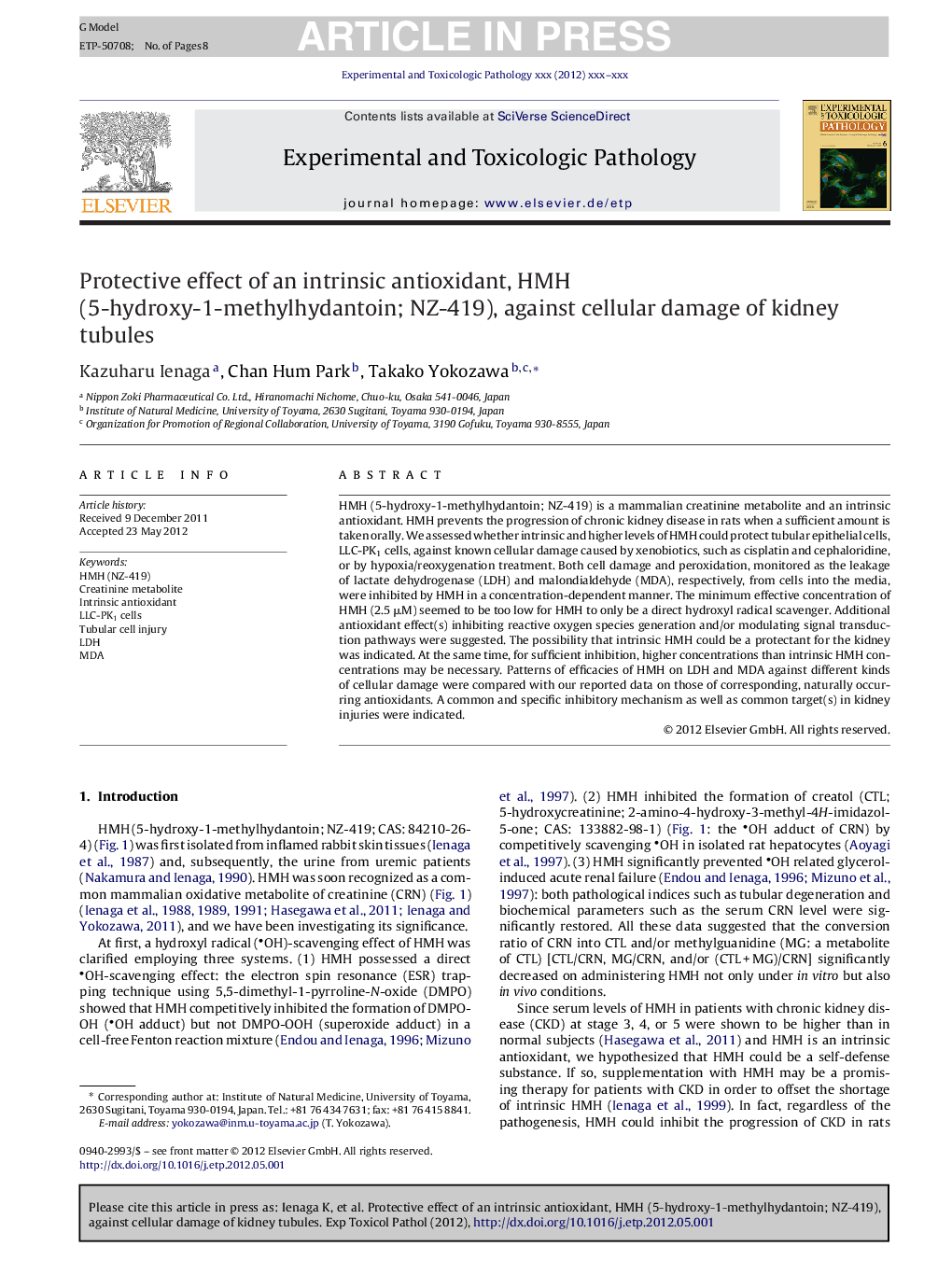| Article ID | Journal | Published Year | Pages | File Type |
|---|---|---|---|---|
| 5817108 | Experimental and Toxicologic Pathology | 2013 | 8 Pages |
Abstract
HMH (5-hydroxy-1-methylhydantoin; NZ-419) is a mammalian creatinine metabolite and an intrinsic antioxidant. HMH prevents the progression of chronic kidney disease in rats when a sufficient amount is taken orally. We assessed whether intrinsic and higher levels of HMH could protect tubular epithelial cells, LLC-PK1 cells, against known cellular damage caused by xenobiotics, such as cisplatin and cephaloridine, or by hypoxia/reoxygenation treatment. Both cell damage and peroxidation, monitored as the leakage of lactate dehydrogenase (LDH) and malondialdehyde (MDA), respectively, from cells into the media, were inhibited by HMH in a concentration-dependent manner. The minimum effective concentration of HMH (2.5 μM) seemed to be too low for HMH to only be a direct hydroxyl radical scavenger. Additional antioxidant effect(s) inhibiting reactive oxygen species generation and/or modulating signal transduction pathways were suggested. The possibility that intrinsic HMH could be a protectant for the kidney was indicated. At the same time, for sufficient inhibition, higher concentrations than intrinsic HMH concentrations may be necessary. Patterns of efficacies of HMH on LDH and MDA against different kinds of cellular damage were compared with our reported data on those of corresponding, naturally occurring antioxidants. A common and specific inhibitory mechanism as well as common target(s) in kidney injuries were indicated.
Keywords
Related Topics
Life Sciences
Agricultural and Biological Sciences
Animal Science and Zoology
Authors
Kazuharu Ienaga, Chan Hum Park, Takako Yokozawa,
